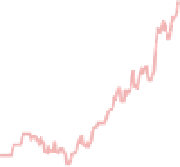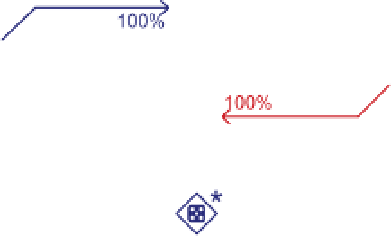Game Development Reference
In-Depth Information
What we've done here is to change the balance between income from passing Go
and costs from paying rent. It's no longer possible to pass Go enough to cover the
rising rent—even if we set the amount earned by passing Go fairly high. We ran a
nondeterministic diagram 1,000 times in which both players invest in houses, with
an income from Go set to 5/(3+D5). We learned that somebody will win the game
roughly 75% of the time (with an equal chance of either player winning). The other
25% of the time the game drags on until the Machinations Tool stops it. But with
income set to 2/(3+D5), the chances of a game dragging on forever drop to zero.
With a high income and the effects of rent inflation doubled, the chance of entering
an equilibrium is reduced to 2%. The graphs these settings produce in general look
quite interesting (
Figure 8.16
).
FIGURe 8.16
a better balance
between rent and
income
Adding Dynamic Friction
Our model of
Monopoly
has now added rent inflation and solved the early prob-
lem that passing Go permitted the game to go on forever. However, the power of
property is now actually
too
high. Having more property than your opponent is
the most significant indicator of who is going to win. This means that the
dynamic




















































